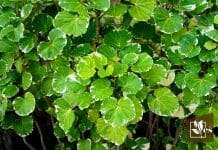How to wrap shrubs for winter is the process that will help you avoid any damage to your plant. Shrubs are in a vulnerable position during this harsh season, and this might cost them their survival when they are left without any protection, which is why wrapping them is a great approach that you should take.
So, we are here to help you learn how to wrap them up before the danger of frost sets in; let’s start.
JUMP TO TOPIC
How to Wrap Shrubs for Winter in Easy Steps?
To wrap shrubs for winter in easy steps, you should prepare the right tools and the material needed; then you should check the kind of shrub you have. After this, you should wrap the shrub using twine, cover it with a burlap sack, wrap the trunks with the tree wrap,
When the winter season comes, plants are more likely to be a victim of winter damage when they are not protected. Wrapping is the only protection you can give your plants during this time of the year.
Wrapping evergreens for winter should be done when the trees are dormant. This is typically after having a good snowfall when the snow has stayed on the ground. If you wrap evergreens with burlap wrap too early, the plant will heat up and sweat. This will cause molds to build up inside because there is not enough air movement, so make sure that when 80 percent of the snow has melted, you may remove the plant cover.
– Prepare the Tools and the Right Materials
As soon as you hear that heavy snow is in the weather forecast, gather all the tools and materials you will need before getting started to ensure protection for your shrubs. These tools and materials can easily be found inside your house, or you can purchase them at a local hardware store.
You will need twine, a sledgehammer, a pump sprayer, and a staple gun for this task. In addition, you also need a pair of scissors, some burlap sack or shrub wrap, and you also need plastic or paper tree wrap, and lastly, a watering can with water.
– Check the Kind and Wrap Accordingly
You must check the type of shrub that you have, and if it is an evergreen one, you should take the steps accordingly. Although evergreens, especially the mature ones, can handle the winter season without any protection, young trees should be protected until they are able to tolerate the cold weather on their own.
You can wrap your evergreens for winter in two ways: direct wrapping and contact-free wrapping. Direct wrapping is recommended for those who experience heavy snowfall in their location, so knowing the type of tree is an important step. Meanwhile, contact-free wrapping gives trees more sunlight, fresh air, and moisture exposure that they can use for a great transition when spring comes.
– Wrap the Shrubs Using Twine
Once all your tools are ready, you may now start to wrap your shrubs using twine. Start binding the branches at the base of the shrub and work your way up doing a spiral pattern. A conical-shaped plant is the end result you should aim for. This technique will prevent your shrubs from catching too much snow and getting more damage.
For this, you should be mindful that before you start wrapping, make sure that you spread at least four inches of bark mulch around your plant’s base to keep the type of soil you have at a moderate temperature. Also, apply an anti-desiccant onto the plant’s leaves, especially if you have plenty of plants to cover. Anti-desiccant is a way that helps your plant to keep its moisture.
Apply it starting from top to bottom to prevent the shrubs from drying out. Continue to spray an anti-desiccant once a month during winter, but not when the temperature hits below 40 degrees. If you have numerous shrubs to cover, you can easily apply this using a pump sprayer.
– Cover with a Burlap Sack
After successfully wrapping the branches with twine, you must hammer at least three to four wooden stakes into the ground. Place them around your plant, allowing a few inches of space between plants, before you cover them with the burlap sack or shrub wrap. These stakes will hold the burlap sack and keep it in a secure position, especially when winter winds become conspicuous. Then, you can wrap your plants with the burlap sack or shrub wrap and staple it on the stakes.
Burlap is the most popular material that can provide protection for your plant against the threat of cold winter winds and help them retain moisture, especially for young trees that are not sturdy enough. Do not worry about your plant getting suffocated when covered with burlap in this steep. It is more efficient than any other material, such as fabric or plastic, because burlap is woven wide enough for shrubs to breathe so that they would stay properly developing.
Burlap allows the air to circulate and does not let the heat or cold air get trapped inside, so when the spring season comes, your shrubs won’t be shocked by the time you need to remove their covers and take them out into the light. It is best that the burlap does not touch the foliage of your shrubs as much as possible because when it becomes wet and freezes, it might cause damage to your plant.
Aside from keeping your shrubs warm and protected from damage caused by the cold season, encasing your plants with burlap also protects them from deer grazing. It also keeps them warm and reduces salt damage in the longer run.
– Wrap the Trunks with Tree Wrap
Wrapping the trunks with tree wrap protects them not just from sun scald but from frost damage as well. After wrapping the branches with twine and burlap, you can install the tree wrap and remove it when the last frost in spring has passed. Make sure that you remove it and not let it stay year-round; otherwise, it will serve as a home for insects.
There are many ways to protect your plant from the danger of frost, and you can do all of it by yourself. First, you can make frost blankets to fend off frost. Take a blanket plant cover, and simply put it over your plant and secure it properly, so that it stays warm and well.
You can also use the upside-down bucket and pots method, where you simply place a bucket or pot upside-down to cover your plant. You can use this method for small sensitive plants. You can also opt for row covers or plastic coverings. Cut the plastic to the size of the plant you want to cover, secure it to the ground with heavy stones or bricks, and fasten the plastic to the hoops.
Another method is using frost covers with fabric, so with the scissors, you must cut fabric to the desired length, and sew it using a sewing needle to a frame. The last method you can use is to dig up your plants and place them in pots. This is applicable to smaller plants. You have to dig them up and place them indoors until the frost has passed. You can then replant them when the spring season comes.
– Water Shrubs Thoroughly
To direct wrap your evergreens, you must first make sure that they are mulched and watered well. Then, you can cover them using a wide strip of burlap wrap, and after this, you should tie it loosely but securely with twine from the base of the tree and wrap it upward. After this you must also be detailed it is loose and gently wrapped. It should not constrain the tree or fall off the tree.
You must first create a fence around your tree to do contact-free wrapping. You will need at least three stakes as tall as your tree. Place one stake directly in front of the tree on the windy part. Then, get the other two stakes and use them to make a triangle around your tree.
Water your shrubs using a watering can (you can use purified tap water) to give moisture to the soil and prevents it from defoliating. Finally, after winterizing your shrubs, they are ready to face the cold weather.
Nevertheless, if the snow starts to fall before you protect your shrubs, you can brush the snow off the foliage and branches using a broom or just your arm, but make sure that you do it as early as possible. In this step, do not attempt to remove the ice when your shrubs are covered in ice after an ice storm because it will only cause damage to your plant.
How to Wrap Boxwood Shrub in Burlap for Winter?
To wrap boxwood shrubs in burlap for winter, you should first prepare the tools that you need, and wrap the shrub with some burlap. After this, make sure to have some twine and tie the wrapping; and then, you can easily remove the burlap.
Boxwood shrubs are known for their ability to respond well to severe pruning and lush evergreen foliage. Still, since they are prone to browning under harsh weather, it is important to wrap them in burlap and minimize the damage they may acquire from it.
– Prepare the Tools You Will Need
Twine is what you need when you are wrapping a boxwood shrub in some burlap wrap, and you will need the right amount of the burlap as well. This is why you should remember to have the material beforehand so that you would use it in the right way.
– Wrap with Burlap
To do this step, you may need someone to help you out. You will need to wrap the boxwood in a single layer. One person should secure and hold the burlap in place while the other one wraps. Make sure that the branches inside are arranged upward and not downward to avoid breaking them, so be careful and mindful at the same time on this matter.
– Tie with Twine
Once the boxwood shrubs are covered in burlap, get the twine and tie it around the bottom of the burlap-covered area to secure it. As you start from the bottom of the shrub, work your way up, wrapping with the twine until you reach the top of the burlap. Then, tie the end of the twine. Be sure to wrap the boxwood tight enough to hold it in place but not too tight to prevent the branches from deforming.
– Remove the Burlap
After the cold temperature subsides, make sure to remove the burlap to avoid overheating. This occurs when the weather starts to warm, and the winter protection is left on the plant for too long, at the beginning of spring, when the temperature is perfect.












